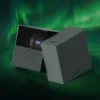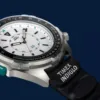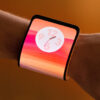The world of television has always been full of attractions that have enthralled audiences throughout the decades. From the first black and white screens to today's smart televisions, which promise an improved user experience, this "household" appliance has evolved into the center of home entertainment. We explore 10 myths and facts about television and at the same time present the Slovenian Hisense U7.
Television has not only remained the central center of our domestic entertainment over the decades, but has also experienced a monumental technological evolution that has enriched its functionality and user experience. From a simple viewing tool to a smart device that provides access to a variety of multimedia content, television has come an impressive way. Along with this development, there were also myths and facts that over time became part of the television viewing culture. Let's explore some.
10 amazing myths and facts about television
Fact 1: The number of televisions in the world
Almost every household in the world has a television, which represents almost 1.8 billion households. Assuming that every household has an average of 4 family members, this means that almost every inhabitant of the world has access to a television, i.e. about 7.2 billion people.
Interesting fact: Company Hisense achieved a record delivery of televisions in December 2022, namely 2.35 million kosav, which allowed them to occupy for the first time first place in the ranking of all TV manufacturers in the world. It is interesting that the Hisense U7 television is manufactured in Slovenia, specifically in Velenje.
Fact 2: The time we spend in front of the television
The average person will spend nine years of their life in front of the television, which is almost a decade. In one year, we spend an incredible five months in front of the television, as people spend an average of more than 3 hours a day in front of the television. These figures reflect a significant part of the time people spend in front of the TV.
Interesting fact: On the other hand, technological innovations also bring environmental benefits. For example, a Hisense TV consumes an average of 100 kWh of electricity per year. However, thanks to the built-in sensors and artificial intelligence that adjust the brightness according to the lighting conditions in the room, this TV can consume less energy, which is a step forward in the direction of energy efficiency and smart technology.
Myth 3: Does watching TV harm your eyes?
The myth that watching television is bad for the eyes dates back to the days of old televisions, but modern screens do not emit harmful radiation. However, it is recommended to rest your eyes from time to time, especially if you are watching television with a smaller screen and struggling to read subtitles, as this can affect your vision. For example, a 65-inch television that measures 164 centimeters diagonally offers a large enough screen for comfortable viewing. In addition, this model of television offers a refresh rate of 144Hz, which is especially suitable if you connect a game console to the television. In such cases, Game Mode Pro is automatically activated, which improves the gaming experience by optimizing the image display.
Fact 4: When did we get color television?!
The first color television was introduced in 1954 and cost about a thousand dollars, which at the time was equivalent to the price of a small car. It is interesting that the modern Hisense 65 U7 television, which costs around 900 euros, is very comparable in price to the historical price of the first color television, although the actual value of money has fallen significantly due to inflation. The first color telecast was the Tournament of Roses, which took place on January 1, 1954, but television stations mostly broadcast programs in black and white until the mid-1970s. Facts about the history of color television and price comparisons with modern televisions offer an interesting insight into the evolution of this technology and its accessibility to the general public.
Myth 5: Television kills brain cells
The myth that television kills brain cells has been debunked, as educational shows and documentaries can actually stimulate brain activity. However, excessive television viewing, especially reality shows, may not contribute to cognitive development. Interestingly, television viewing is more common in poorer countries compared to countries with a higher gross domestic product. They watch TV there for several hours a day.
Interesting fact: technological advances allow modern televisions such as the Hisense 65-inch U7 KQ model to be equipped with premium features. This model offers 4K UHD resolution in Mini LED technology, a screen diagonal of 164 cm (65”), and Dolby Atmos sound technology. The smart TV is powered by the VIDAA operating system, which supports almost all streaming applications, which further enriches the user experience and enables access to a wide range of educational and entertainment content.
Myth 6: Fewer and fewer people watch TV
Although people seem to be watching less and less television, there are still events that attract huge audiences to their screens, such as the Olympics and the FIFA World Cup, which together are watched by around a billion people. Hisense, which is a proud sponsor of the FIFA World Cup, has developed a smart television that uses artificial intelligence to detect what is happening on the screen and automatically switch to "sports" mode. This mode adjusts the refresh rate, colors and brightness on the TV screen for a better user experience. With innovative features like this, Hisense TVs ensure that watching TV continues to be an engaging and technologically advanced experience that adapts to the dynamic needs of viewers.
Fact 7: Where is the largest television in the world?
The largest television in the world is located in Beijing and measures an incredible 250 meters in length and 30 meters in width. This gigantic size of television highlights how far technology has come since the early days of broadcast television, but also raises the question of the possibilities and potential that television and its screens offer for the future. Giant screens can offer a unique viewing experience that can change the way we perceive and use television in our daily lives.
Fact 8: When was the first TV ad aired?!
The first television ad was broadcast in 1941 and lasted only ten seconds, which is very different compared to modern advertising blocks. Over time, technology has allowed for more user-friendly experiences, such as the ability to skip ads. For example, the Hisense TV mentioned in the conversation supports streaming apps, allowing viewers to skip ads and enjoy their favorite shows or movies uninterrupted. This functionality not only enhances the viewing experience, but also testifies to how television technology has evolved in favor of the user.
Fact 9: Hisense U7 is an EISA 2023 – 2024 Award Winner
Hisense 65U7 is a television model that received the prestigious EISA award for the period 2023-2024, which is an indication of the high quality and innovation that this model brings to the market. The EISA awards are recognized all over the world and award the best products in the electronics industry, which further confirms the value and reliability of the Hisense 65U7 TV.
Fact 10: What TV to buy in 2024?
When choosing a television in 2024, it is worth considering technological innovations and functions that have proven themselves over the years. For example, a model Hisense 65U7, which received the prestigious EISA Award for 2023-2024, is an excellent choice for those looking for advanced technology and a quality viewing experience. With its 4K UHD resolution v Mini LED technology, support for Dolby Atmos sound and smart platform VIDAA, which provides access to many streaming services, this model sets high standards for modern TVs. Additional functions, such as automatically adjusting the picture mode based on the content, for example, switching to the "sports" mode while watching sports events, and the ability to skip advertisements, enrich the user experience and provide convenience to users. It's also interesting how the prices of advanced feature TVs have come down over time, making high-end models more affordable. When choosing a television in 2024, it is important to consider both the quality of the image and sound, as well as smart functions that will allow you to enjoy a wide range of multimedia content.
The content was made possible by Hisense Slovenia.





